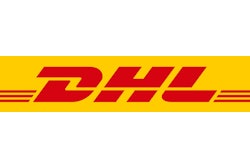New research suggests third-party logistics providers offer tactical services, while users want deeper collaboration, more strategic offerings
San Diego ? October 25, 2005 ? Third-party logistics (3PL) providers need to "reinvent" themselves to offer more strategic and standardized solutions to users, according to a new report released this week by Capgemini and the Georgia Institute of Technology, in collaboration with SAP and DHL.
The findings come from the 10th Annual Third-Party Logistics Study, released this week in San Diego at the 2005 Annual Council of Supply Chain Management Professionals Conference, as well as in London at the Eye for Transport Conference. The study provides a strategic assessment of the use of 3PLs across several key geographies and major industry segments and offers insight into the future of the 3PL industry.
For the first time in the 10 year history of the survey, price has overtaken value-added services to become the most important attribute in selecting a 3PL provider, reflecting the emphasis on the pressure of logistics cost reduction in the supply chain. At the same time that 3PL users closely examine cost, they also are demanding more strategic offerings.
IT's Growing Role
The report stresses the importance of the use of technology in the 3PL supply chain process to balance cost concerns and strategic needs. While 90 percent of respondents agreed that IT capability is a necessary element of overall 3PL provider expertise, only 38 percent are satisfied with their providers' capabilities. This suggests that as more firms progress further into outsourced logistics relationships, the complexity of these relationships necessitates the use of effective IT services for a broad spectrum of supply chain processes.
Survey respondents identified the top three future requirements of IT-based services as being radio frequency identification (RFID), Internet-based transportation/logistics markets and supplier management systems.
Erik van Dort, global sector leader for distribution at Capgemini, explains: "In the current 3PL landscape, there is far too much diversity when it comes to processes and IT systems. There are good reasons for this, but with consolidation ever-increasing, global coverage a must, and intense pressure to remain profitable, change is essential."
"Bold Steps" Needed
3PL providers need to invest now to streamline their operations and reduce overall operating costs so they can afford to compete more aggressively to gain market share, Dort said. "Given the current performance of many 3PL providers, achieving profitability and establishing a leadership position will require some bold steps from the management."
The study surveyed 1,091 logistics and supply chain executives. While about half of responses (516) came from North America, almost one-third (339) came from Western Europe, and approximately one-tenth (144) came from Latin America. Responses also were received from Asia-Pacific (53), South Africa (31) and the Middle East (8).
More than two-thirds of overall respondents came from the manufacturing sector, with significant responses from the automotive, chemical, consumer products, food and beverage, high tech/electronics and life sciences (pharmaceutical) industries.
Core Services Critical
The survey responses confirmed that the proficiency of a 3PL provider's core services was considered more important than the provider's ability to deliver value-added services during the selection of a provider. This shift from frills to core services is a major change, likely driven by recent global consolidation that may have given the perception of weakened core services. Therefore 3PL providers need to get the basics right, yet have the capability to support users on more strategic initiatives if they are to retain contracts in the long term.
"3PL providers cannot be all things to all people; they need to clearly define their customer satisfaction strategy," says C. John Langley Jr., Ph.D., professor of supply chain management and 3PL study leader at Georgia Institute of Technology. "It is essential for 3PL providers to focus on offering a global set of core services at the right price, and then to build a close relationship with the user to offer more strategic services in line with the client's evolving business needs, by transforming their offerings portfolio to include strategic management services."
Industry Evolution Continues
The study confirms that the 3PL industry continues to evolve. Not only are 3PL providers and their capabilities ever-changing, but the expectations that user firms have of their 3PL providers and their services are becoming more strategic.
"In the short term we expect most 3PL providers to follow the trend and offer two-tiered relationship models that combine both tactical and strategic components," said Alec Ang, supply chain logistics director for DHL Asia-Pacific Global Customer Solutions. "3PL providers also need to move up the value chain to provide expertise in the area of supply chain management, beyond traditional asset-focused capabilities. These enhancements will position 3PLs more effectively as LLPs that help customers to reduce supply chain complexity."
Scott Sykes, principal with SAP America, concludes: "There is a clear opportunity for 3PL providers to gain market share by leveraging IT to enable low-cost standardized technology solutions. Once core processes are streamlined globally, 3PL providers can introduce new IT-based services to differentiate themselves to offer and, more importantly, effectively deliver the advanced services that users increasingly demand."
San Diego ? October 25, 2005 ? Third-party logistics (3PL) providers need to "reinvent" themselves to offer more strategic and standardized solutions to users, according to a new report released this week by Capgemini and the Georgia Institute of Technology, in collaboration with SAP and DHL.
The findings come from the 10th Annual Third-Party Logistics Study, released this week in San Diego at the 2005 Annual Council of Supply Chain Management Professionals Conference, as well as in London at the Eye for Transport Conference. The study provides a strategic assessment of the use of 3PLs across several key geographies and major industry segments and offers insight into the future of the 3PL industry.
For the first time in the 10 year history of the survey, price has overtaken value-added services to become the most important attribute in selecting a 3PL provider, reflecting the emphasis on the pressure of logistics cost reduction in the supply chain. At the same time that 3PL users closely examine cost, they also are demanding more strategic offerings.
IT's Growing Role
The report stresses the importance of the use of technology in the 3PL supply chain process to balance cost concerns and strategic needs. While 90 percent of respondents agreed that IT capability is a necessary element of overall 3PL provider expertise, only 38 percent are satisfied with their providers' capabilities. This suggests that as more firms progress further into outsourced logistics relationships, the complexity of these relationships necessitates the use of effective IT services for a broad spectrum of supply chain processes.
Survey respondents identified the top three future requirements of IT-based services as being radio frequency identification (RFID), Internet-based transportation/logistics markets and supplier management systems.
Erik van Dort, global sector leader for distribution at Capgemini, explains: "In the current 3PL landscape, there is far too much diversity when it comes to processes and IT systems. There are good reasons for this, but with consolidation ever-increasing, global coverage a must, and intense pressure to remain profitable, change is essential."
"Bold Steps" Needed
3PL providers need to invest now to streamline their operations and reduce overall operating costs so they can afford to compete more aggressively to gain market share, Dort said. "Given the current performance of many 3PL providers, achieving profitability and establishing a leadership position will require some bold steps from the management."
The study surveyed 1,091 logistics and supply chain executives. While about half of responses (516) came from North America, almost one-third (339) came from Western Europe, and approximately one-tenth (144) came from Latin America. Responses also were received from Asia-Pacific (53), South Africa (31) and the Middle East (8).
More than two-thirds of overall respondents came from the manufacturing sector, with significant responses from the automotive, chemical, consumer products, food and beverage, high tech/electronics and life sciences (pharmaceutical) industries.
Core Services Critical
The survey responses confirmed that the proficiency of a 3PL provider's core services was considered more important than the provider's ability to deliver value-added services during the selection of a provider. This shift from frills to core services is a major change, likely driven by recent global consolidation that may have given the perception of weakened core services. Therefore 3PL providers need to get the basics right, yet have the capability to support users on more strategic initiatives if they are to retain contracts in the long term.
"3PL providers cannot be all things to all people; they need to clearly define their customer satisfaction strategy," says C. John Langley Jr., Ph.D., professor of supply chain management and 3PL study leader at Georgia Institute of Technology. "It is essential for 3PL providers to focus on offering a global set of core services at the right price, and then to build a close relationship with the user to offer more strategic services in line with the client's evolving business needs, by transforming their offerings portfolio to include strategic management services."
Industry Evolution Continues
The study confirms that the 3PL industry continues to evolve. Not only are 3PL providers and their capabilities ever-changing, but the expectations that user firms have of their 3PL providers and their services are becoming more strategic.
"In the short term we expect most 3PL providers to follow the trend and offer two-tiered relationship models that combine both tactical and strategic components," said Alec Ang, supply chain logistics director for DHL Asia-Pacific Global Customer Solutions. "3PL providers also need to move up the value chain to provide expertise in the area of supply chain management, beyond traditional asset-focused capabilities. These enhancements will position 3PLs more effectively as LLPs that help customers to reduce supply chain complexity."
Scott Sykes, principal with SAP America, concludes: "There is a clear opportunity for 3PL providers to gain market share by leveraging IT to enable low-cost standardized technology solutions. Once core processes are streamlined globally, 3PL providers can introduce new IT-based services to differentiate themselves to offer and, more importantly, effectively deliver the advanced services that users increasingly demand."












